-
The Ultimate Guide to Car Wheel Alignment: Why It Matters and How to Get It Right

Car wheel alignment is a critical aspect of vehicle maintenance that often goes unnoticed until it causes significant problems. Proper wheel alignment ensures your vehicle drives smoothly, efficiently, and safely. This comprehensive guide will explore why wheel alignment matters, the signs that indicate your car needs alignment, and how to get it right.What is Wheel Alignment?

Wheel alignment refers to the adjustment of the angles of the wheels so that they are set to the manufacturer’s specifications. The primary angles involved in wheel alignment are:1. Camber: The angle of the wheels when viewed from the front of the car. If the top of the wheel leans inward (negative camber) or outward (positive camber), it can affect tire wear and handling.
2. Toe: The angle at which the tires turn inward or outward when viewed from above. Toe-in means the front of the tires are closer together, while toe-out means they are further apart.
3. Caster: The angle of the steering axis when viewed from the side of the vehicle. It affects the steering stability and cornering performance.
Why Wheel Alignment Matters

1. Safety: Misaligned wheels can lead to uneven tire wear, reducing the tire’s effectiveness and increasing the risk of blowouts or accidents. Proper alignment ensures better control and stability of the vehicle.2. Fuel Efficiency: When your wheels are aligned correctly, your tires have less rolling resistance. This means your engine doesn’t have to work as hard, leading to better fuel economy.

3. Tire Longevity: Proper alignment prevents uneven tire wear, extending the life of your tires and saving you money in the long run.4. Smooth Ride: Misalignment can cause your car to pull to one side, vibrate, or produce a bumpy ride. Aligning the wheels ensures a smoother and more comfortable driving experience.
Signs Your Car Needs a Wheel Alignment

1. Uneven Tire Wear: If you notice that the tread on your tires is wearing unevenly, it’s a clear sign that your wheels are misaligned.2. Vehicle Pulls to One Side: When driving on a straight, level road, your car should drive straight. If it pulls to one side, it’s time to check the alignment.
3. Steering Wheel Off-Center: Your steering wheel should be centered when driving straight. If it’s off-center, even by a small amount, it indicates a potential alignment issue.

4. Steering Wheel Vibration: If your steering wheel vibrates or shakes, especially at higher speeds, it could be due to misaligned wheels.5. Squealing Tires: Misaligned wheels can cause your tires to squeal, particularly during turns.
How to Get Your Wheel Alignment Right

1. Professional Alignment Services: The most reliable way to ensure proper alignment is to take your car to a professional service center. They have the necessary equipment and expertise to align your wheels according to the manufacturer’s specifications.2. Regular Maintenance Checks: Include alignment checks in your regular vehicle maintenance routine. It’s recommended to check the alignment every 6,000 miles or as specified in your car’s owner manual.
3. DIY Alignment Checks: While it’s challenging to achieve perfect alignment at home without professional equipment, you can do preliminary checks. Measure the distance between the front and back of the front tires to check the toe alignment. If there’s a significant difference, you likely have an alignment issue.

4. Avoid Potholes and Rough Roads: While it’s not always possible, try to avoid potholes and rough roads that can knock your wheels out of alignment.5. Monitor Tire Pressure: Keeping your tires properly inflated can also help maintain alignment. Under-inflated or over-inflated tires can affect the alignment angles.
How Service My Car Assists You?
Looking for the auto service dubai? Look no further than Service My Car! Our expert technicians provide top-notch service, from routine maintenance to complex repairs, ensuring your vehicle runs smoothly. Why settle for mediocre service when you can experience the best with Service My Car? Schedule an appointment today and discover why we’re the preferred choice for car owners in Dubai. Drive with confidence knowing your vehicle is in good hands with Service My Car.
Conclusion
Proper wheel alignment is crucial for the safety, performance, and longevity of your vehicle. By understanding the importance of alignment and recognizing the signs of misalignment, you can take proactive steps to ensure your car remains in optimal condition. Regular maintenance and professional alignment services are key to achieving a smooth, efficient, and safe driving experience.
-
Toyota Camry Common Problems: A Comprehensive Guide to Troubleshooting

If you own a Toyota Camry or are considering buying one, it’s essential to be aware of common issues that may arise. While the Camry is known for its reliability, like any vehicle, it can experience problems over time. In this guide, we’ll explore some of the most frequently reported issues with the Toyota Camry and provide tips on how to address them.1. Toyota Camry Engine Oil Consumption

One of the most common problems reported by Toyota Camry owners is excessive engine oil consumption. Some models, particularly those with the 2.5-liter four-cylinder engine, may experience oil consumption between scheduled oil changes. This can lead to engine damage if not addressed promptly.Solution: If you notice your Camry consuming more oil than usual, it’s crucial to have it inspected by a qualified mechanic. They can determine the cause of the excessive consumption and recommend appropriate repairs, which may include replacing piston rings or valve seals.
2. Toyota Camry Transmission Issues

Another frequent complaint among Camry owners involves transmission problems. These can manifest as rough shifting, slipping gears, or transmission fluid leaks. Ignoring transmission issues can result in costly repairs down the line.Solution: Regular maintenance, including fluid checks and changes, can help prevent transmission problems. If you experience any unusual symptoms, such as jerking or hesitation during gear shifts, have your Camry inspected by a professional technician.
3. Toyota Camry Brake Noise

Brake squeaking or grinding is a common issue reported by Toyota Camry drivers. This noise can indicate worn brake pads, rotor damage, or other brake system problems. Ignoring brake issues can compromise your vehicle’s safety.Solution: Have your brakes inspected regularly and replace worn brake components as needed. Proper maintenance, including cleaning and lubricating brake components, can help prevent noise and ensure optimal braking performance.
4. Toyota Camry Suspension Problems

Some Toyota Camry models may experience suspension issues, such as excessive bouncing, uneven tire wear, or steering instability. These problems can affect ride comfort and handling.Solution: A thorough inspection of the suspension system by a qualified mechanic can identify any worn or damaged components. Replacing worn shocks, struts, or control arms can restore your Camry’s ride quality and stability.
5. Toyota Camry Electrical Malfunctions

Electrical problems, such as malfunctioning power windows, faulty door locks, or dashboard warning lights, can occur in Toyota Camry vehicles. These issues may stem from wiring faults, sensor failures, or faulty components.Solution: Diagnosing electrical issues requires specialized equipment and expertise. A certified technician can perform diagnostic tests to pinpoint the source of the problem and recommend appropriate repairs.
6. Toyota Camry Air Conditioning Problems

Many Camry owners have reported issues with their air conditioning systems, such as weak airflow, inconsistent cooling, or unusual odors. These problems can arise from refrigerant leaks, compressor issues, or air duct blockages.Solution: Regular maintenance, including air filter replacement and refrigerant checks, can help prevent air conditioning problems. If you experience any issues with your Camry’s AC system, have it inspected by a professional technician.
7. Toyota Camry Fuel System Issues

Fuel-related problems, such as engine hesitation, stalling, or poor fuel economy, can occur in Toyota Camry vehicles. These issues may be caused by dirty fuel injectors, fuel pump failures, or clogged fuel filters.Solution: Routine fuel system maintenance, including fuel injector cleaning and fuel filter replacement, can help prevent performance issues. If you notice any symptoms of fuel system problems, have your Camry inspected by a qualified mechanic.
8. Toyota Camry Exterior Paint Peeling

Some Toyota Camry owners have reported issues with exterior paint peeling or fading prematurely. This can detract from the vehicle’s appearance and potentially lead to corrosion if left untreated.Solution: Addressing paint problems promptly can help prevent further damage. Depending on the extent of the damage, repainting affected areas or applying protective coatings may be necessary to restore the Camry’s appearance.
9. Toyota Camry Dashboard Cracks

Cracks or splits in the dashboard are a common cosmetic issue reported by Toyota Camry owners, particularly in older models. These cracks can be unsightly and may worsen over time.Solution: While dashboard cracks typically do not affect vehicle performance, they can detract from the interior aesthetics. Replacing the dashboard or using cosmetic repair kits can help restore the interior appearance of your Camry.
10. Toyota Camry Excessive Wind Noise

Some Camry owners have complained about excessive wind noise, particularly at higher speeds. This can be caused by poorly sealed windows, worn weather stripping, or aerodynamic design flaws.Solution: Inspecting and replacing worn weather stripping can help reduce wind noise and improve cabin comfort. Additionally, addressing any issues with window seals or aerodynamics can minimize wind noise levels.
How Service My Car Assist You?
Looking for the car service dubai? Look no further than Service My Car! Our expert technicians provide top-notch service, from routine maintenance to complex repairs, ensuring your vehicle runs smoothly. Why settle for mediocre service when you can experience the best with Service My Car? Schedule an appointment today and discover why we’re the preferred choice for car owners in Dubai. Drive with confidence knowing your vehicle is in good hands with Service My Car.
In conclusion, while the Toyota Camry is known for its reliability and longevity, it is not immune to common problems that may arise over time. By staying informed about these issues and addressing them promptly, you can ensure that your Camry remains a dependable and enjoyable vehicle for years to come. Regular maintenance, timely repairs, and professional inspections are key to maximizing the lifespan and performance of your Toyota Camry.
-
A Comprehensive Guide to Suzuki Jimny's Common Problems

The Suzuki Jimny is a beloved compact off-road vehicle known for its ruggedness and reliability. However, like any vehicle, it has its share of common problems. Whether you’re a current owner or considering buying one, understanding these issues can help you maintain your Jimny in top condition.
Suzuki Jimny Engine Issues

Overheating
One common problem with the Suzuki Jimny is engine overheating. This can be caused by various factors, such as a malfunctioning thermostat, a clogged radiator, or a faulty water pump. Symptoms include a high-temperature gauge reading, steam coming from the engine bay, and the smell of coolant. To prevent overheating, regularly check your coolant levels, ensure the radiator is clean, and replace the thermostat if necessary.
Oil Leaks
Oil leaks are another frequent issue. They often originate from the valve cover gasket, oil pan gasket, or crankshaft seals. Noticing oil spots under your vehicle or a burning oil smell can indicate a leak. Addressing oil leaks promptly is crucial to prevent engine damage. Regularly inspect the engine and replace any worn-out gaskets or seals to keep your Jimny running smoothly.
Suzuki Jimny Transmission Troubles

Manual Transmission Problems
Manual transmission problems, such as gear slipping and clutch issues, are not uncommon. Gear slipping can be due to worn synchronizers or a failing clutch. Signs of clutch problems include difficulty shifting gears, a spongy clutch pedal, or a burning smell. Regular maintenance and timely replacement of the clutch and related components can help avoid these issues.
Automatic Transmission Issues
For Jimny models with automatic transmissions, delayed shifting and rough gear changes can be problematic. These issues are often linked to low or dirty transmission fluid. Regularly checking and replacing the transmission fluid, as well as inspecting the transmission for wear and tear, can help maintain smooth operation.
Suzuki Jimny Suspension and Steering Problems

Suspension Wear
The Suzuki Jimny’s suspension system can wear out over time, especially if frequently driven off-road. Signs of suspension problems include uneven tire wear, a bumpy ride, and noise when going over bumps. Regularly inspecting the suspension components and replacing worn parts, such as shock absorbers and bushings, can enhance ride quality and safety.
Steering Difficulties
Steering issues, such as a loose or stiff steering wheel, can arise due to problems with the power steering system or worn steering components. Checking the power steering fluid levels and inspecting the steering linkage can help identify and resolve these issues.
Suzuki Jimny Electrical System Faults
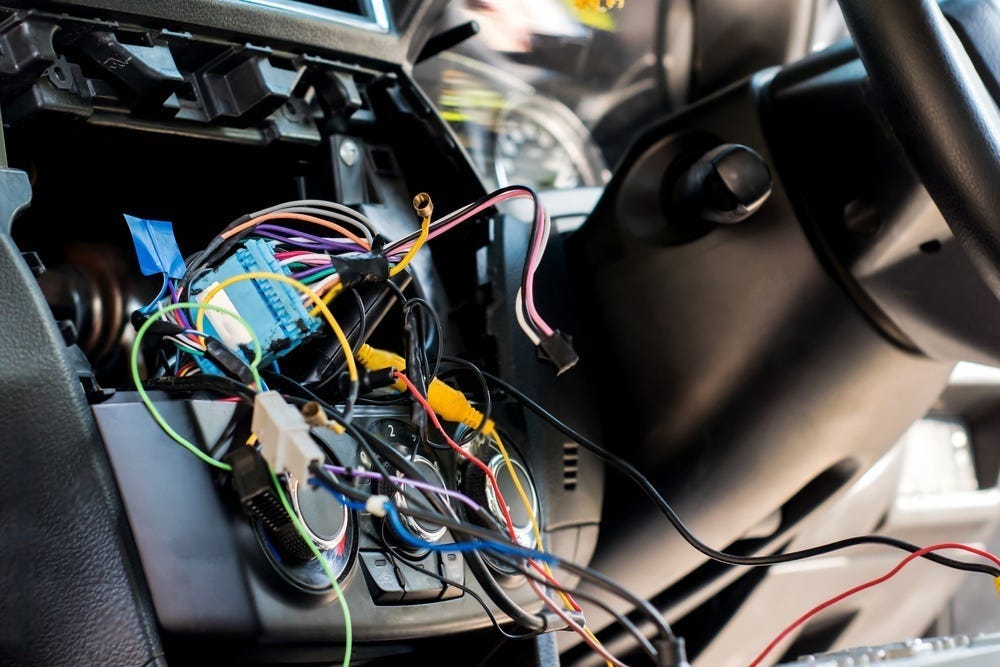
Battery Issues
Battery problems, like frequent drainage or failure to hold a charge, are common. This can result from leaving lights on, a faulty alternator, or an old battery. Regularly testing the battery and charging system, and replacing the battery every few years, can prevent unexpected breakdowns.
Alternator Problems
A failing alternator can cause electrical issues, such as dimming lights or a dead battery. Symptoms include warning lights on the dashboard and unusual noises from the alternator area. If the alternator is failing, it should be repaired or replaced to ensure the electrical system functions correctly.
Suzuki Jimny Brake System Concerns

Brake Pad Wear
Worn brake pads are a safety concern that can lead to reduced braking performance. Indicators of worn brake pads include squeaking noises, a longer braking distance, and a pulsating brake pedal. Regularly inspecting and replacing brake pads is essential for maintaining safe braking performance.
Brake Fluid Leaks
Brake fluid leaks can compromise the braking system, leading to a spongy brake pedal or reduced braking power. Leaks often occur at the brake lines or calipers. Detecting and fixing brake fluid leaks promptly is vital to ensure your brakes function effectively.
Suzuki Jimny Body and Interior Issues

Rust and Corrosion
Rust is a common problem, especially in older Jimny models. Common rust areas include the wheel arches, door sills, and undercarriage. To prevent rust, regularly wash your Jimny, especially after driving on salted roads, and apply rust protection treatments. If rust appears, treating it promptly can prevent it from spreading.
Interior Wear and Tear
The Jimny’s interior can suffer from wear and tear, such as fading upholstery and cracked dashboard materials. Using seat covers, regular cleaning, and using UV protectants on plastic surfaces can help maintain the interior’s condition.
Suzuki Jimny Exhaust System Problems

Exhaust Leaks
Exhaust leaks can lead to increased noise, reduced engine performance, and harmful emissions entering the cabin. Common sources of leaks include the exhaust manifold, gaskets, and pipes. Inspecting and repairing the exhaust system can help maintain performance and reduce emissions.
Emissions Issues
Emissions issues, such as failing an emissions test, can be caused by problems with the catalytic converter, oxygen sensors, or exhaust leaks. Regular maintenance and timely replacement of these components can help ensure your Jimny meets emission standards.
Suzuki Jimny Cooling System Failures

Radiator Problems
A failing radiator can cause engine overheating and coolant leaks. Symptoms include coolant under the vehicle, a high-temperature gauge, and coolant smell. Regular radiator maintenance, including flushing and replacing the coolant, can prevent these issues.
Coolant Leaks
Coolant leaks can occur from the radiator, hoses, or water pump. Signs of a coolant leak include a low coolant level, visible coolant under the car, and engine overheating. Identifying and fixing leaks early can prevent engine damage.
Suzuki Jimny Fuel System Troubles

Fuel Pump Failures
A failing fuel pump can cause engine stalling, difficulty starting, and reduced performance. Symptoms include sputtering at high speeds and a whining noise from the fuel tank. Replacing a faulty fuel pump can restore proper fuel delivery to the engine.
Fuel Injector Issues
Fuel injector problems, such as clogs or leaks, can lead to poor engine performance and increased fuel consumption. Regularly cleaning the injectors and replacing them if necessary can ensure efficient fuel delivery.
How Service My Car Assist You?
Want to skip the hassle of waiting in line for a car oil change in Dubai ? Service My Car brings convenience to your doorstep with professional car oil change services. Say goodbye to scheduling headaches and hello to effortless maintenance. Our expert technicians ensure your vehicle gets the care it deserves, all without you lifting a finger. Experience the ease of keeping your car in top condition without ever leaving your driveway. Trust Service My Car for a seamless at-home oil change experience.
Conclusion
The Suzuki Jimny, while a reliable and rugged vehicle, has its share of common problems. Understanding these issues and performing regular maintenance can help keep your Jimny in excellent condition. By addressing problems early and maintaining your vehicle, you can enjoy many years of trouble-free driving.
-
Unveiling the Top 5 Common Problems with the Volvo S60
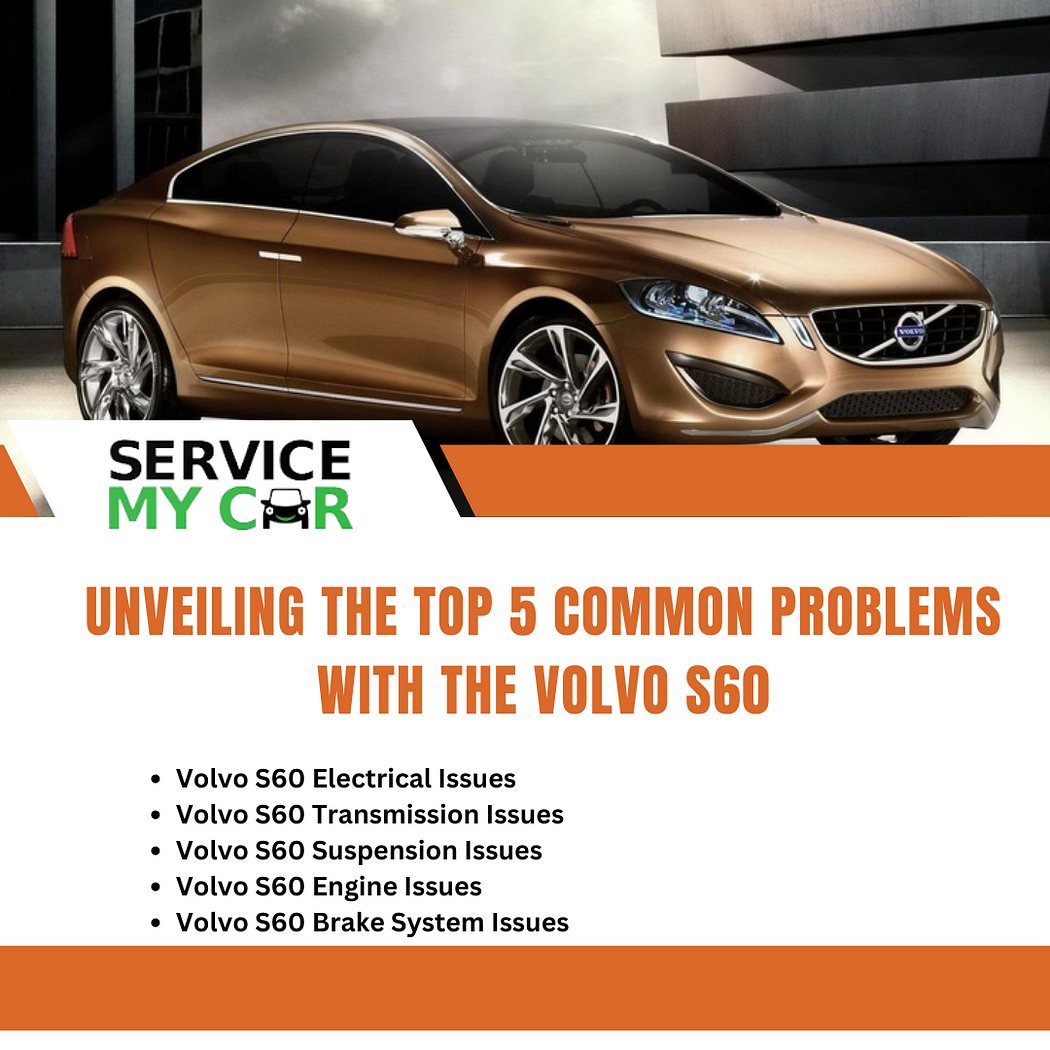
Introduction
In the realm of luxury automobiles, the Volvo S60 stands out as a pinnacle of Scandinavian engineering and design. However, even the most meticulously crafted machines can encounter issues over time. In this comprehensive guide, we delve into the top 5 common problems that Volvo S60 owners may face, providing insights and solutions to ensure a seamless driving experience.
1. Volvo S60 Electrical System Glitches

Electrical system glitches often plague modern vehicles, and the Volvo S60 is no exception. Owners may encounter issues such as malfunctioning infotainment systems, erratic dashboard displays, or faulty sensors. These problems can stem from various sources, including wiring issues, software bugs, or component failures.To address electrical gremlins, it’s crucial to conduct thorough diagnostics using specialized equipment. Certified technicians can pinpoint the root cause of the issue and implement targeted repairs or software updates to restore functionality. Regular maintenance checks and software updates can also help prevent future electrical woes.
2. Volvo S60 Transmission Concerns

The transmission is a vital component of any vehicle, responsible for transferring power from the engine to the wheels. In some Volvo S60 models, owners may experience transmission-related issues such as rough shifting, delayed engagement, or transmission fluid leaks.Proper maintenance is key to ensuring the longevity of the transmission. Regular fluid checks and replacements, along with adherence to recommended service intervals, can mitigate the risk of transmission problems. Additionally, addressing any warning signs promptly can prevent minor issues from escalating into costly repairs.
3. Volvo S60 Suspension Challenges
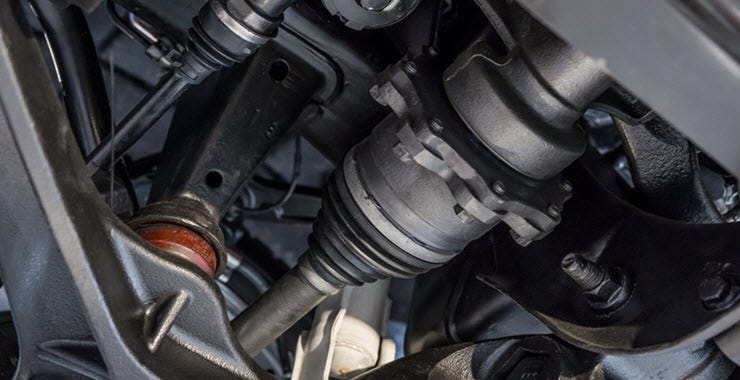
A smooth and stable ride is synonymous with the Volvo S60 experience. However, suspension challenges can disrupt this harmony, leading to issues such as excessive bouncing, uneven tire wear, or a noticeable decline in ride quality.Suspension components undergo constant wear and tear, especially on vehicles traversing uneven terrain or experiencing harsh driving conditions. Routine inspections by qualified mechanics can detect worn-out bushings, damaged shocks, or misaligned suspension geometry. Timely replacements and alignments can restore the S60’s handling prowess and ride comfort.
4. Volvo S60 Engine Performance Issues
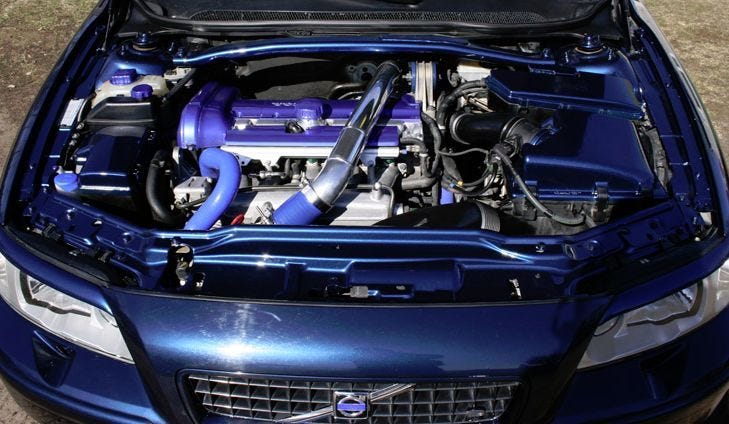
The heart of any vehicle, the engine, powers the Volvo S60 with robust performance and efficiency. Nevertheless, owners may encounter engine-related issues such as rough idling, decreased power output, or illuminated warning lights indicating potential faults.Regular maintenance, including oil changes, filter replacements, and spark plug inspections, is crucial to preserving engine health. Additionally, addressing any abnormal symptoms promptly can prevent minor issues from escalating into major repairs. Advanced diagnostic tools enable technicians to diagnose engine problems accurately and implement effective solutions.
5. Volvo S60 Brake System Malfunctions

The brake system is paramount to vehicle safety, providing reliable stopping power in various driving conditions. However, Volvo S60 owners may encounter brake-related issues such as squealing brakes, pulsating pedal feedback, or decreased stopping performance.Routine brake inspections are essential to detect worn brake pads, warped rotors, or fluid leaks. Timely replacements and maintenance of brake components ensure optimal braking performance and enhance overall safety on the road.
How Service My Car Assist You?
Looking to ensure your car rides smoothly? Service My Car offers expert wheel balancing and alignment services! Our skilled technicians use state-of-the-art equipment to precisely balance your wheels, enhancing stability and reducing vibrations. But wait, are your tires wearing unevenly? Let us perform a meticulous alignment to correct any misalignments, ensuring optimal handling and extending tire life. Trust Service My Car for a smoother, safer ride every time!
Conclusion
While the Volvo S60 epitomizes luxury, performance, and safety, it’s not immune to common automotive woes. By addressing the top 5 common problems outlined in this guide with proactive maintenance and timely repairs, owners can uphold the integrity and reliability of their beloved vehicles for years to come.
-
Common Issues with the BMW X1

Introduction
The BMW X1 stands as a beacon of luxury and performance in the compact SUV market. However, like any other vehicle, it’s not immune to certain issues that may arise over time. In this comprehensive guide, we’ll delve into some of the common issues faced by BMW X1 owners, providing insights and solutions to help you navigate these challenges seamlessly.
BMW X1 Electrical Problems

One of the recurring issues reported by BMW X1 owners revolves around electrical malfunctions. These can manifest in various forms, such as malfunctioning infotainment systems, sensor failures, or electronic glitches. While BMW is known for its cutting-edge technology, the complexity of these systems can sometimes lead to unexpected issues. It’s crucial to address any electrical anomalies promptly to prevent further complications.
BMW X1 Transmission Issues
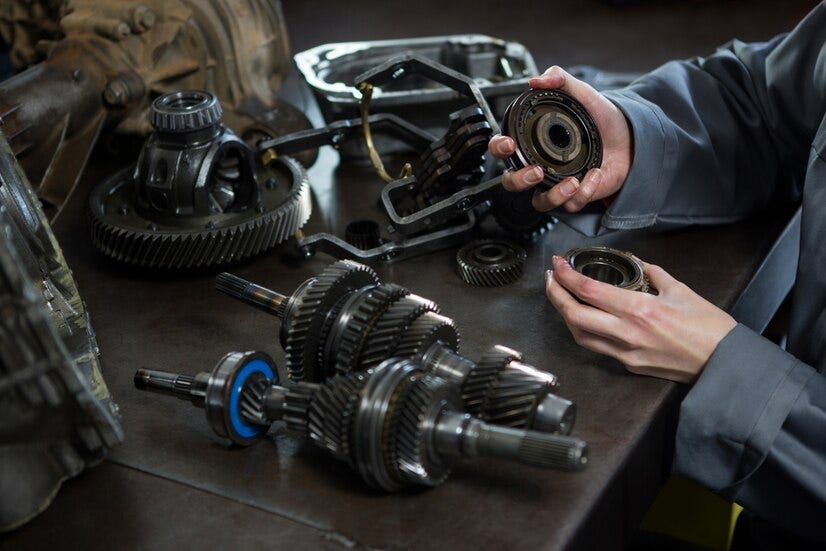
Another area of concern for BMW X1 drivers is transmission problems. Some users have reported issues with jerky shifting, slipping gears, or delayed response. These issues can significantly impact the driving experience and may indicate underlying mechanical issues. Regular maintenance, including fluid checks and transmission inspections, can help mitigate these problems and ensure optimal performance.BMW X1 Oil Leaks Issues

Oil leaks are a common issue observed in several BMW models, including the X1. These leaks can originate from various sources, such as gaskets, seals, or oil pans. If left unaddressed, oil leaks can lead to engine damage and premature wear. It’s essential to address any signs of oil leakage promptly by consulting with a qualified mechanic and performing the necessary repairs.
BMW X1 Suspension Problems

The BMW X1 is renowned for its agile handling and responsive suspension system. However, some drivers have reported issues such as suspension noise, vibrations, or uneven tire wear. These symptoms may indicate problems with the shock absorbers, struts, or suspension bushings. Regular inspections and maintenance can help identify and resolve suspension issues before they escalate.
BMW X1 Engine Performance

While the BMW X1 boasts impressive performance credentials, some users have experienced issues with engine performance. Symptoms may include rough idling, loss of power, or engine misfires. These issues can stem from various factors, such as faulty ignition components, fuel system problems, or exhaust issues. Regular engine tune-ups and diagnostic checks can help ensure optimal performance and fuel efficiency.
How Service My Car Assist You?
Are you wondering where to find professional car service near me? Look no further than Service My Car. Our experienced technicians provide top-notch service for all your automotive needs. Whether you need routine maintenance or major repairs, we've got you covered. Trust Service My Car to keep your vehicle running smoothly and safely. Schedule an appointment today and experience the difference at Service My Car.
Conclusion
In conclusion, while the BMW X1 offers an exhilarating driving experience and unparalleled luxury, it’s essential to be aware of potential issues that may arise. By addressing these common issues proactively and seeking timely maintenance and repairs, you can continue to enjoy the superior performance and comfort that the BMW X1 has to offer.
-
Audi S4 Common Issues and Modifications

Introduction: Decoding the Audi S4
Welcome to our comprehensive guide on Audi S4 common issues and modifications. As enthusiasts and experts in the automotive realm, we understand the allure of the Audi S4. Its blend of performance, luxury, and engineering excellence captivates drivers worldwide. However, like any high-performance machine, the Audi S4 is not without its quirks and challenges. In this guide, we delve into the common issues faced by Audi S4 owners and explore the realm of modifications to unlock its full potential.
Understanding Common Issues
Audi S4 Engine Performance and Reliability
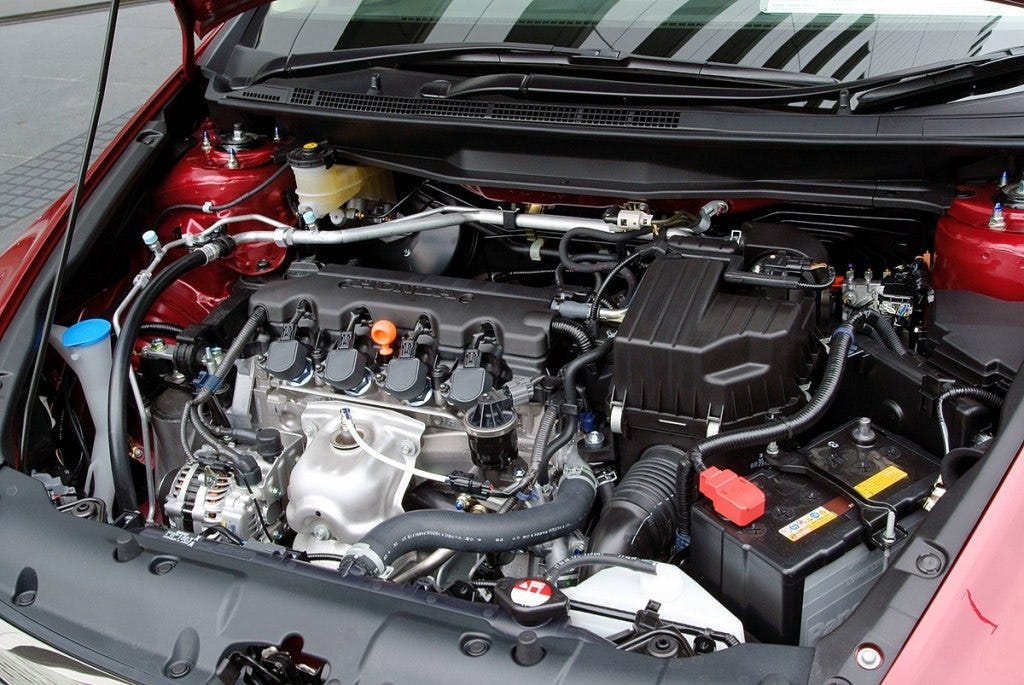
One of the most prevalent concerns among Audi S4 owners revolves around engine performance and reliability. While the S4 boasts impressive powerplants, such as the robust V6 engines, certain models may experience issues such as oil consumption, carbon buildup, or turbocharger failures. It’s imperative for owners to stay vigilant with routine maintenance and address any warning signs promptly to mitigate potential issues.Audi S4 Transmission and Drivetrain

The transmission and drivetrain components of the Audi S4 are engineered to deliver seamless power delivery and dynamic handling. However, some owners may encounter issues with transmission solenoids, mechatronic units, or differential failures. Regular fluid inspections and servicing can help prolong the lifespan of these critical components and ensure optimal performance.Audi S4 Suspension and Handling Dynamics
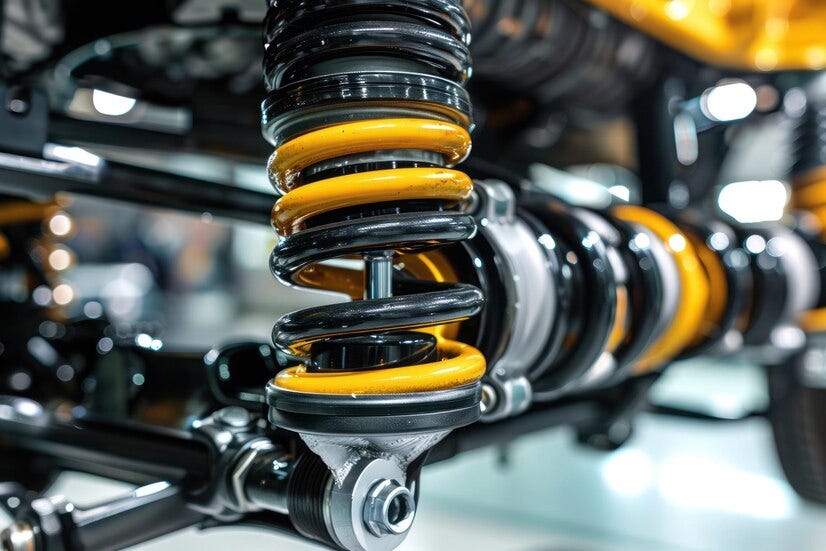
As a high-performance sedan, the Audi S4 is renowned for its precise handling and agility. Nevertheless, worn suspension components, such as bushings or control arms, can compromise ride quality and cornering prowess. Upgrading to aftermarket suspension components or opting for performance-oriented upgrades can enhance the S4 handling characteristics and driver engagement.Audi S4 Electrical Systems and Technology

Modern automotive technology is a hallmark of the Audi S4 experience, featuring advanced infotainment systems, driver assistance aids, and connectivity features. However, intermittent electrical gremlins or malfunctions may arise, affecting components like sensors, modules, or wiring harnesses. Thorough diagnostics and, if necessary, professional repairs can restore the S4 technological prowess and user experience.Exploring Modifications for Performance and Personalization
Audi S4 Engine Tuning and ECU Remapping
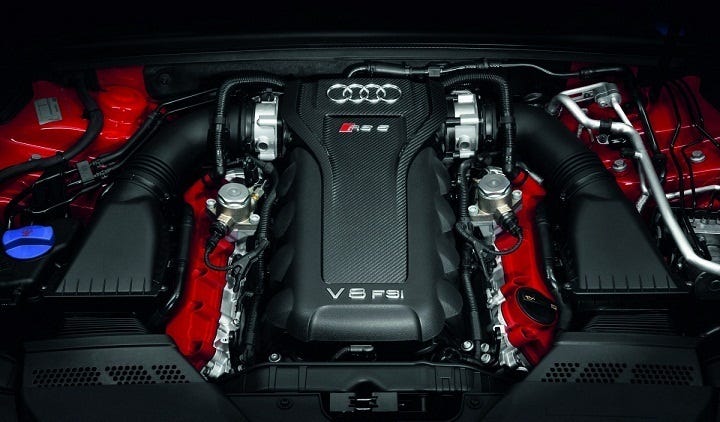
Unlocking the full potential of the Audi S4 begins with optimizing engine performance through ECU remapping and engine tuning. Reputable tuning companies offer bespoke software upgrades that recalibrate fueling, ignition timing, and boost pressure, resulting in substantial power gains and improved throttle response. Whether it’s achieving higher horsepower figures or refining drivability, ECU remapping is a popular modification among Audi S4 enthusiasts.Audi S4 Exhaust Systems and Intake Upgrades

Enhancing the auditory and performance aspects of the Audi S4 involves upgrading the exhaust system and intake components. Cat-back exhaust systems, downpipes, and high-flow air intakes not only amplify the S4 exhaust note but also increase airflow efficiency, leading to noticeable gains in horsepower and torque. Additionally, aftermarket exhaust options offer customizable sound profiles to suit individual preferences, ranging from subtle refinement to aggressive growls.Audi S4 Suspension and Braking Enhancements
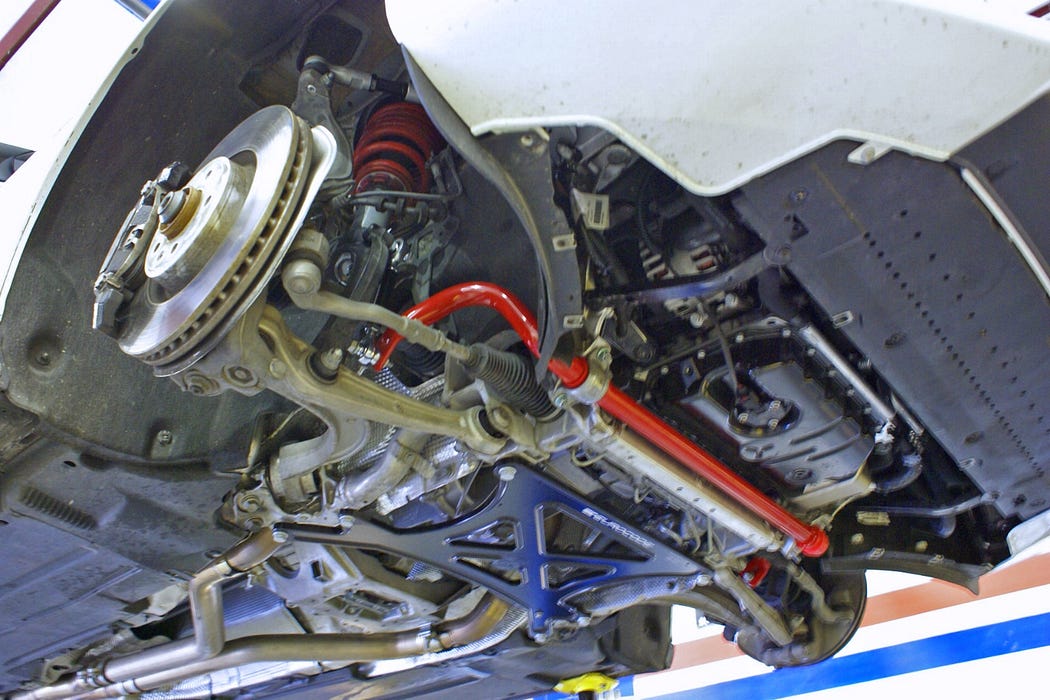
Optimizing the Audi S4 handling prowess entails upgrading suspension components and braking systems to complement its performance capabilities. Coilover suspension kits, sway bars, and performance-oriented brake pads and rotors enhance stability, cornering grip, and stopping power, allowing drivers to extract maximum performance on both road and track environments. Furthermore, adjustable suspension setups offer versatility for fine-tuning ride height and damping characteristics according to driving preferences and conditions.Audi S4 Exterior and Interior Customization

Personalizing the Audi S4 aesthetics and cabin environment allows owners to make a statement and tailor their driving experience to their tastes. From aerodynamic body kits and carbon fiber accents to bespoke upholstery and multimedia enhancements, the possibilities for customization are endless. Whether it’s enhancing curb appeal or elevating interior comfort and convenience, aftermarket upgrades enable Audi S4 owners to express their individuality and passion for automotive excellence.How Service My Car Assist You?
Wondering where to get a top-notch car dent repair dubai? Service My Car has you covered! With our skilled technicians and advanced techniques, we specialize in seamlessly restoring your vehicle’s beauty, eliminating those unsightly dents. Whether it’s a minor ding or a more significant dent, trust us to get your car looking as good as new. Say goodbye to those blemishes and hello to a flawless finish with Service My Car’s professional car dent repair services in Dubai.
Conclusion: Unleash the Audi S4 Potential
In conclusion, navigating the realm of Audi S4 common issues and modifications empowers enthusiasts to unlock the full potential of this iconic sports sedan. By addressing common reliability concerns and embracing performance-oriented upgrades, owners can elevate their driving experience to new heights of exhilaration and satisfaction. Whether it’s optimizing engine performance, refining handling dynamics, or personalizing aesthetics, the Audi S4 offers endless opportunities for automotive enthusiasts to indulge their passion for driving excellence.
-
Understanding the Most Common Problems with Honda Accord
If you’re a proud owner of a Honda Accord, you’re likely aware of its reputation for reliability, comfort, and performance. However, like any vehicle, the Honda Accord isn’t immune to issues that may arise over time. Understanding these common problems can help you stay ahead of potential issues and keep your Accord running smoothly for years to come.1. Honda Accord Transmission Issues
One of the most prevalent issues reported by Honda Accord owners is transmission problems. These can manifest in various ways, including slipping gears, rough shifting, or complete transmission failure. In some cases, this may be due to inadequate transmission fluid levels or a faulty torque converter. It’s crucial to address any transmission issues promptly to prevent further damage to your vehicle.2. Honda Accord Braking System Issues
Another common area of concern in Honda Accords is the braking system. Owners have reported issues such as squeaking or grinding noises when braking, pulsation or vibration felt through the brake pedal, and premature wear of brake pads and rotors. Regular inspections and maintenance of the braking system can help identify and resolve any issues before they escalate.3. Honda Accord Electrical Issues
Electrical issues can plague any modern vehicle, and the Honda Accord is no exception. Owners have reported problems with various electrical components, including malfunctioning power windows, issues with the stereo system, and problems with the vehicle’s lighting. These issues can often be traced back to faulty wiring, blown fuses, or issues with the vehicle’s battery.4.Honda Accord Engine Issues
While Honda Accords are known for their efficient and reliable engines, some owners have reported issues related to engine performance. These may include rough idling, engine stalling, or a decrease in fuel efficiency. Regular maintenance, including oil changes, spark plug replacements, and air filter replacements, can help mitigate these issues and keep your engine running smoothly.5. Honda Accord Suspension Issues
The suspension system plays a vital role in ensuring a smooth and comfortable ride in your Honda Accord. However, over time, components such as shocks, struts, and control arms may wear out, leading to issues such as excessive bouncing, uneven tire wear, or a feeling of instability while driving. Regular inspections and timely replacement of worn suspension parts can help maintain optimal ride quality.6. Honda Accord Air Conditioning Issues
A malfunctioning air conditioning system can quickly turn your comfortable ride into a sweaty ordeal, especially during hot summer months. Some Honda Accord owners have reported issues such as inadequate cooling, strange noises coming from the AC unit, or a complete failure of the system. Proper maintenance, including regular inspections and refrigerant recharge, if necessary, can help prevent these issues.7. Honda Accord Steering Issues
Issues with the steering system can compromise the safety and handling of your Honda Accord. Owners have reported problems such as difficulty steering, a loose or sloppy feeling in the steering wheel, or excessive play in the steering mechanism. These issues may be caused by worn steering components or problems with the power steering system.8. Honda Accord Oil Consumption Issues
While some oil consumption is normal in any engine, excessive oil consumption can be indicative of underlying issues in your Honda Accord. Owners have reported having to add oil between scheduled oil changes more frequently than expected, which can indicate problems such as worn piston rings or valve stem seals. Monitoring your oil levels regularly and addressing any abnormal consumption promptly can help prevent engine damage.9. Honda Accord Rust and Corrosion Issues
Despite Honda’s reputation for building durable vehicles, some Honda Accords may be prone to rust and corrosion, especially in regions with harsh weather conditions or high humidity levels. Common areas where rust may develop include the undercarriage, wheel wells, and door sills. Regular washing and waxing, as well as addressing any paint chips or scratches promptly, can help prevent rust from spreading and damaging your vehicle’s body.10. Honda Accord Recalls and Safety Issues
Lastly, it’s essential for Honda Accord owners to stay informed about any recalls or safety concerns related to their vehicles. Honda has issued recalls in the past for issues such as airbag defects, faulty ignition switches, and brake system problems. Staying up to date with recalls and promptly addressing any safety-related issues can help ensure the safety of you and your passengers.How Service My Car Assists You?
Wondering where to get a cheap brake pad replacement? Look no further than Service My Car! Our expert technicians provide top-notch brake pad replacements at budget-friendly prices, ensuring your vehicle stops smoothly and reliably. With our commitment to quality service and affordability, you can trust Service My Car to keep you driving safely without breaking the bank. Schedule your appointment today and experience the difference!
Conclusion
In conclusion, while the Honda Accord is generally a reliable and well-built vehicle, it’s essential for owners to be aware of the potential issues that may arise over time. By staying proactive with maintenance and addressing any problems promptly, you can help keep your Accord running smoothly and enjoy many miles of trouble-free driving.
-
6 Most Common Problems with Mazda CX-5 Explained
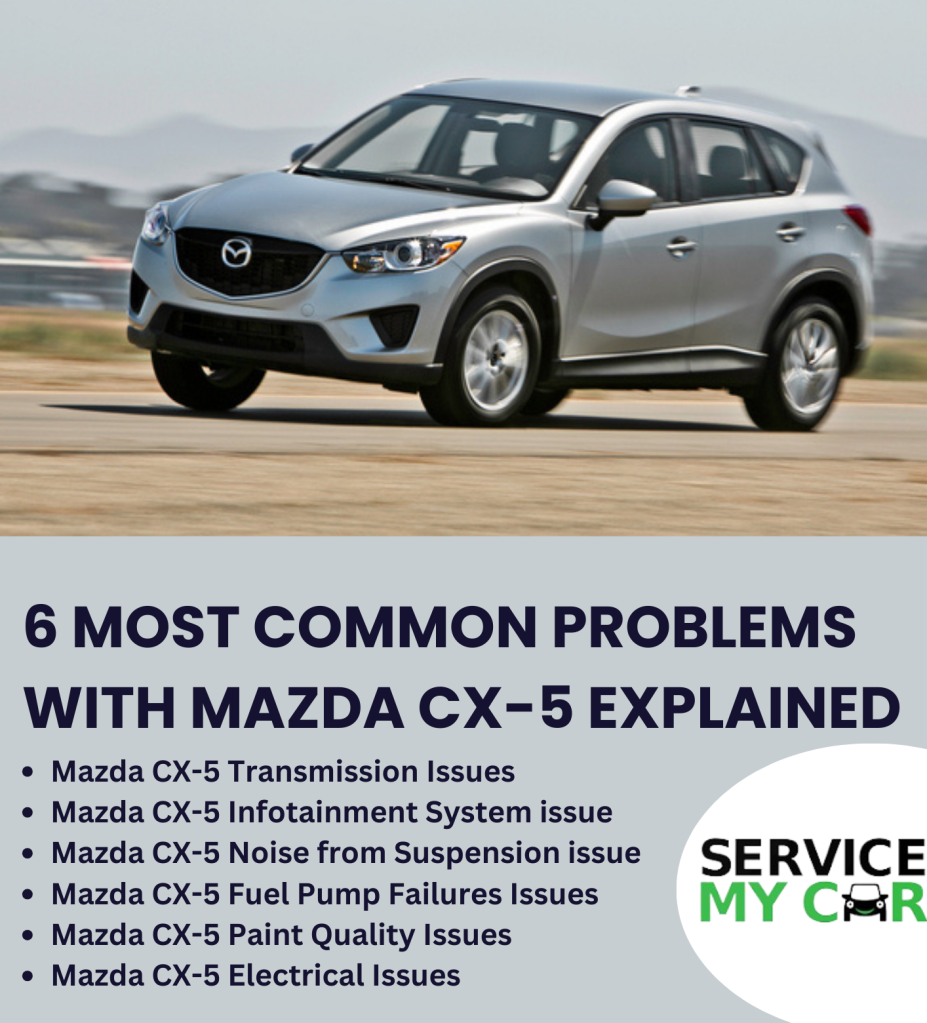
Introduction:
Mazda CX-5, the epitome of style and performance in the world of SUVs, has garnered a loyal fan base for its sleek design, robust engineering, and delightful driving experience. However, like any other vehicle, it’s not immune to its share of issues. In this blog post, we’ll delve into the six most common problems that CX-5 owners might encounter, offering insights and solutions to keep your Mazda running smoothly on the road.
1. Mazda CX-5 Transmission Issues:
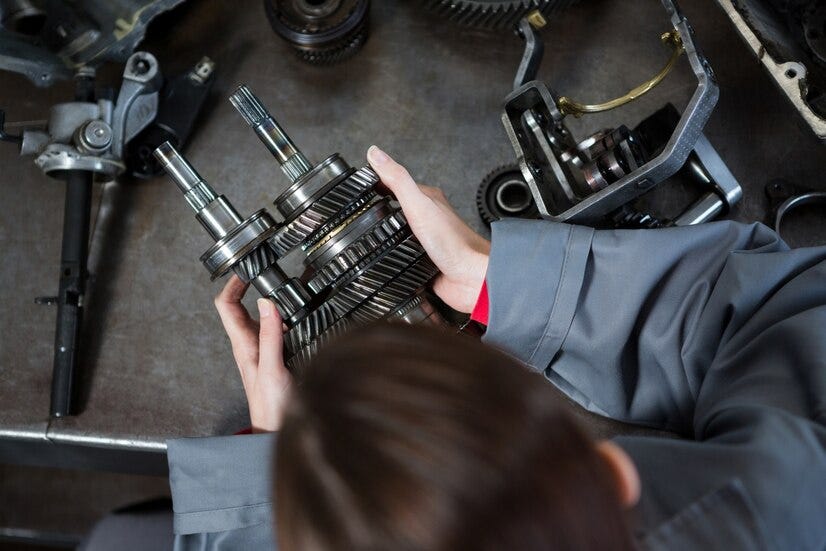
Among the most reported problems with Mazda CX-5 is transmission-related issues. Some owners have experienced jerky shifts, hesitation during acceleration, or even complete transmission failure. This could be attributed to faulty transmission control modules or clutch problems. Regular maintenance checks and timely fluid changes can help mitigate these issues. If you notice any unusual behaviour in your CX-5’s transmission, it’s crucial to get it inspected by a qualified mechanic promptly.2. Mazda CX-5 Infotainment System Glitches:
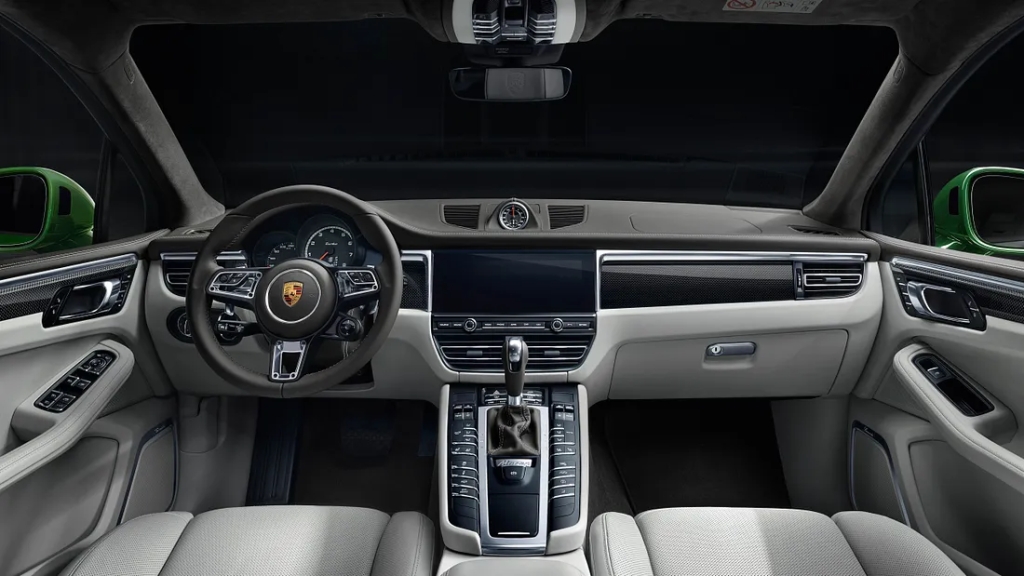
As technology becomes increasingly integrated into modern vehicles, the infotainment system plays a central role in the driving experience. However, Mazda CX-5 owners have occasionally faced glitches in their infotainment systems, such as freezing screens, unresponsive controls, or Bluetooth connectivity issues. Updating the system software regularly and resetting the infotainment system can often resolve these issues. In some cases, a software update from Mazda may be required to address persistent problems.3. Mazda CX-5 Noise from Suspension Components:
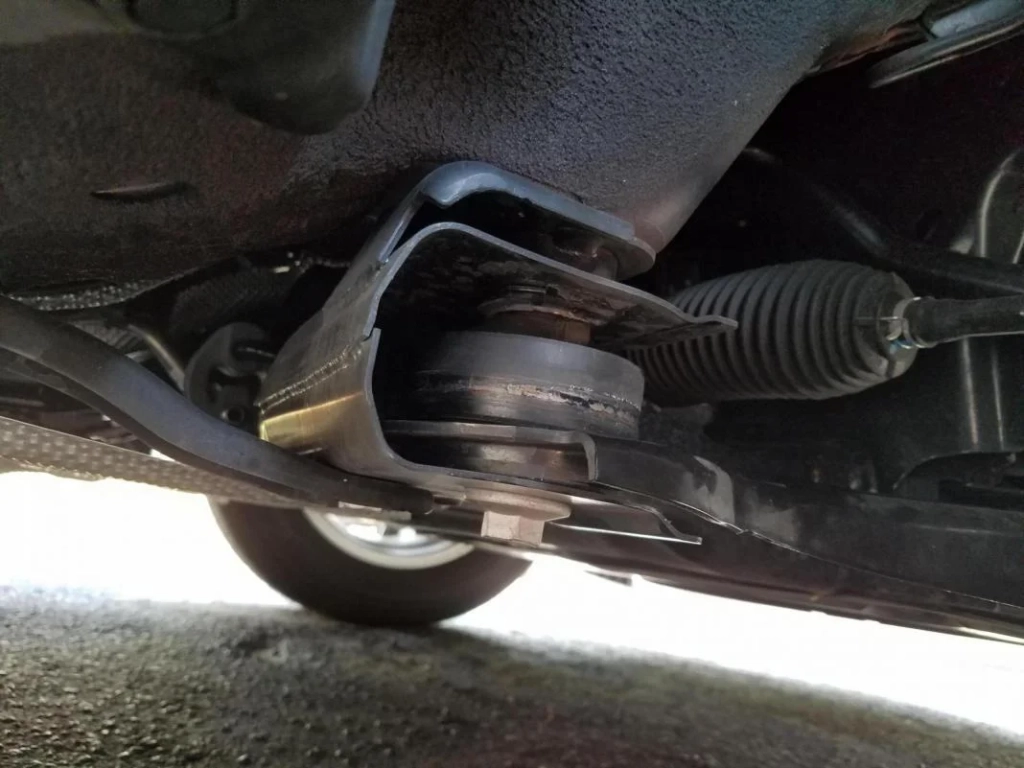
While Mazda CX-5 is renowned for its smooth and comfortable ride, some owners have reported noises emanating from suspension components, particularly over bumps or rough terrain. These noises can be attributed to worn-out bushings, struts, or sway bar links. A thorough inspection by a qualified technician can help identify the source of the noise, and replacing the faulty components can restore the tranquillity of your CX-5’s ride.4. Mazda CX-5 Fuel Pump Failures Issues:

Fuel pump failures have been cited by some Mazda CX-5 owners as a recurring issue. Symptoms may include difficulty starting the engine, stalling, or loss of power while driving. A failing fuel pump can disrupt the fuel delivery system, leading to engine performance issues. Regular inspection of the fuel system and prompt replacement of a worn-out fuel pump can prevent potential breakdowns and ensure the smooth operation of your CX-5.5. Mazda CX-5 Paint Quality Issues:

While Mazda is renowned for its attention to design and aesthetics, some CX-5 owners have expressed dissatisfaction with the paint quality, reporting instances of premature chipping, peeling, or fading. Environmental factors, such as exposure to sunlight and road debris, can exacerbate paint damage over time. Applying a protective wax coating regularly and promptly addressing any paint imperfections can help preserve the appearance of your CX-5 and prevent further deterioration.6. Mazda CX-5 Electrical Issues:
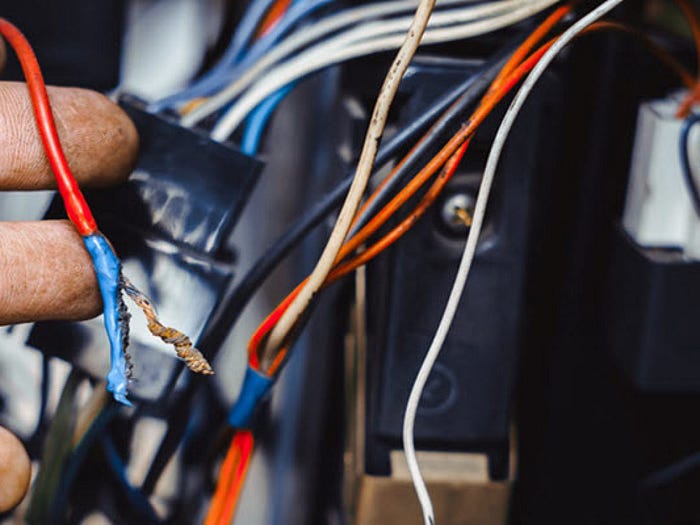
Electrical gremlins can plague any modern vehicle, and Mazda CX-5 is no exception. Owners have reported various electrical issues, ranging from malfunctioning power windows and door locks to erratic dashboard warning lights. These problems could stem from wiring harness issues, faulty sensors, or a drained battery. Regular battery checks, ensuring proper grounding of electrical components, and addressing any wiring issues can help minimize the risk of electrical failures in your CX-5.How Service My Car Assists You?
Looking for reliable car road side assistance in Dubai? Service My Car offers prompt and professional support whenever you're stranded on the road. Our comprehensive assistance ensures you're never left stranded, whether it's a flat tire, dead battery, or running out of fuel. With Service My Car, you can count on timely aid to get you back on track swiftly and safely. Don't let car troubles ruin your journey – trust Service My Car for dependable roadside assistance whenever you need it most.
Conclusion:
While the Mazda CX-5 boasts a plethora of admirable qualities, including stylish design, agile handling, and advanced technology, it’s not impervious to common automotive issues. By staying informed about potential problems and proactively addressing them through regular maintenance and timely repairs, you can ensure that your CX-5 remains a reliable and enjoyable companion on the road. Remember, a little care goes a long way in preserving the performance and longevity of your beloved Mazda CX-5.

You’re offline. This is a read only version of the page.

